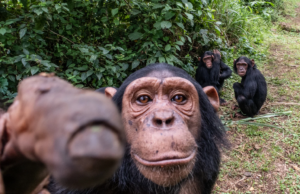What zoos are for?

 To entertain the public. Straight and simple. Look no further use, since it does not exist and if they say “educate children, conserve biodiversity, generate research and knowledge about the fauna “, you must know that it’s all marketing.
To entertain the public. Straight and simple. Look no further use, since it does not exist and if they say “educate children, conserve biodiversity, generate research and knowledge about the fauna “, you must know that it’s all marketing.
When the first zoo came early in last century in the UK, it was a place to show “human freaks” , mainly abnormal beings, dwarves, wild, defects, etc.. Then it began to incorporate rare and charismatic animals, to get to what is today a center of fun , many of them included in important tourist itineraries in first world countries .
This new dimension of fun demanded the enrichment of the facilities, such as the North American water parks, as well as modern zoos, such the ones in New York and San Diego, and some British, which disguise the prison that the zoos mean for the thousands of animals locked up there with a nice look and all types of services for visitors, from continuing shows and movies to demonstrations and other activities.
Zoos have been grouped regionally; there are North American and European Association of Zoos. Through them they have managed to maintain a standard of quality, as well as a corporate policy. They participate of international organizations, help some research projects and try to hide their true purpose, which is to amuse the audience at the expense of the lives of millions of mentally disturbed animals who live in places below their wild and free nature.
If we rescue the history of zoos, we see that in their 100 years of existence they were the ones that caused depredation of dozens of species in Africa, Asia and America. Chimpanzees who arrived in the United States were the first orders of zoos, and the same happened with gorillas and orangutans in America and Europe. In the Netherlands and Switzerland, it was established, in the past half century, true warehouses of primates and other large mammals, where they were sold to zoos and collectors of animals in all countries.
When we are not mentioning yet the area of private zoos, such as trafficker Pablo Escobar’s, the singer Michael Jackson’s and the dictator Saddam Hussein’s. The rich and powerful do not conform with the existence of public zoos and departed for private collections, which were fed by zoos and animal traffickers from all corners of the planet.
It was lovely to have a zoo, a lot of animals locked up, mentally ill, to be contemplated by those who wished to show their power and to draw attention of the world.
Recently, a Public Hearing in the House of Representatives in Brazil, in which we participate to discuss a CONAMA Resolution in relation to wildlife, it was presented with realism, even for the supervisory authorities themselves, the lack of adequate placed to keep animals captured from drug traffickers or illegal local merchants. Often , the offender gets the animal, since the authorities have no place to send them and the Brazilian target system redemptions, which IBAMA calls CETAS, is in permanent crisis and has been converted into a graveyard more than a place to sustain life.
Meanwhile, over 150 zoos, a large majority owned by municipalities and even states, still exists, ignoring this reality and caring little about it. Half of Brazilian zoos is illegal or does not have operating permissions of federal environmental authorities. But that does not stop them from getting open and welcome millions of visitors every year.
Ten years ago or so, a bill was moved in the House, authored by a parliamentary of the Green Party, that led zoos to a different destination: convert them into centers of Animal Rescue, ceasing the harassment of animals, which causes a lot of damage to their minds. If that project had been approved, CONAMA would not need to make a contradictory norm, and would be trying to solve the crisis in the work of supervision of the illegal market.
Zoos now have their own money, have built facilities and have trained staff in handling animals. The investment that the Government would made is small, if we consider that we could have a network of 150 centers across the country, where the animals would have a destination, programs of rehabilitation and reintegration free life. We would cease to import animals from other latitudes, which only have market purposes, and these funds would be reinvested in the maintenance of Rescue Centers. Brazil would give the world a lesson on how to properly administer its fauna and animal traffic would suffer a severe blow.
Maybe 2014 is the crucial time to walk this path. The millions of innocent beings who are removed from their habitats each year would be the best gif Humanity could offer to the planet, demonstrating that it does care to the rest of Nature, and not only with itself .
Dr. Pedro Ynterian
Presidente, GAP Project International

 Español
Español
 Português
Português








